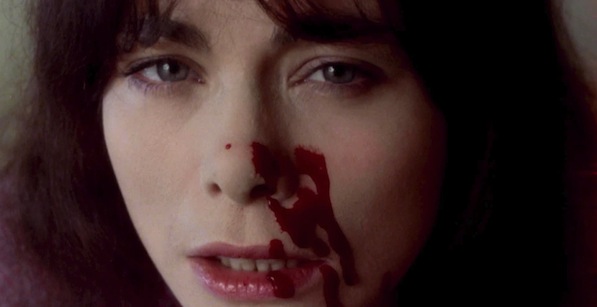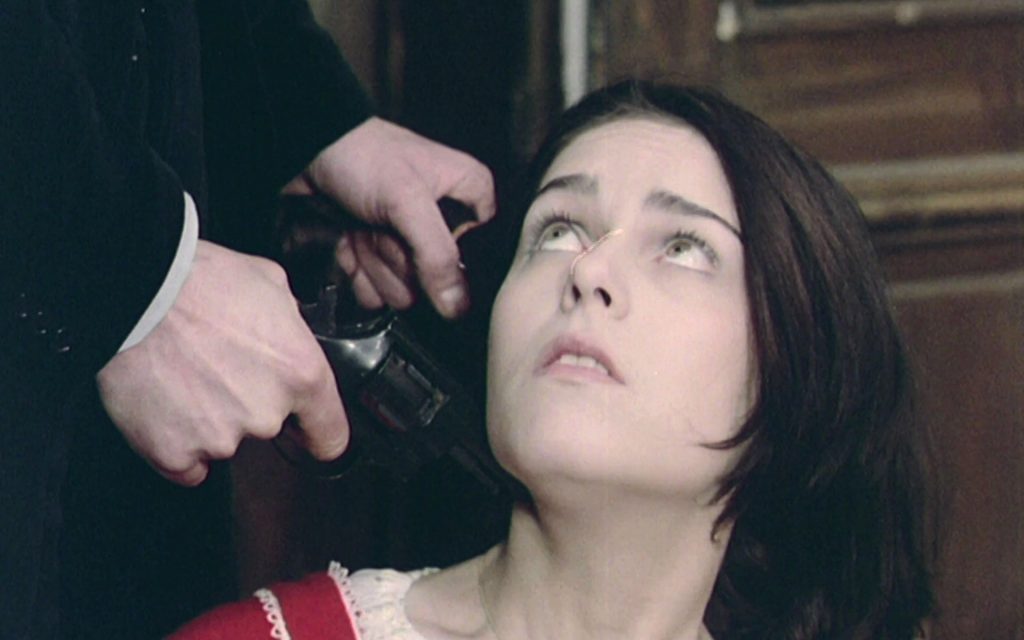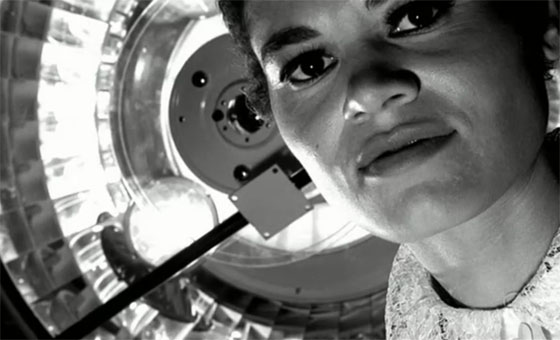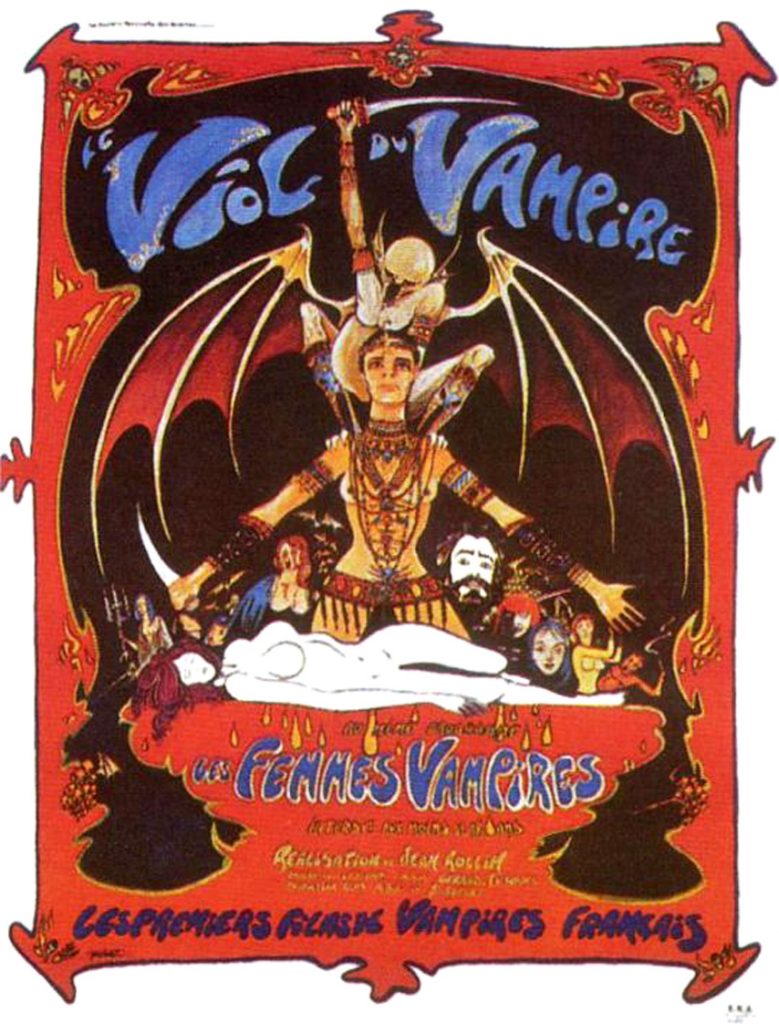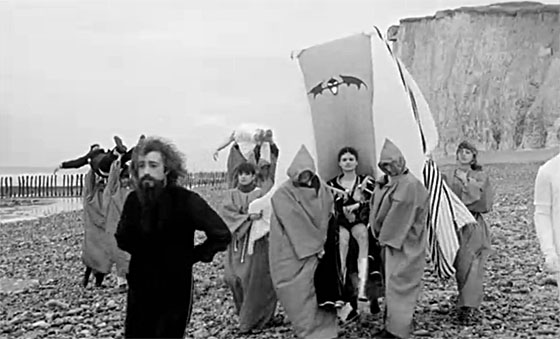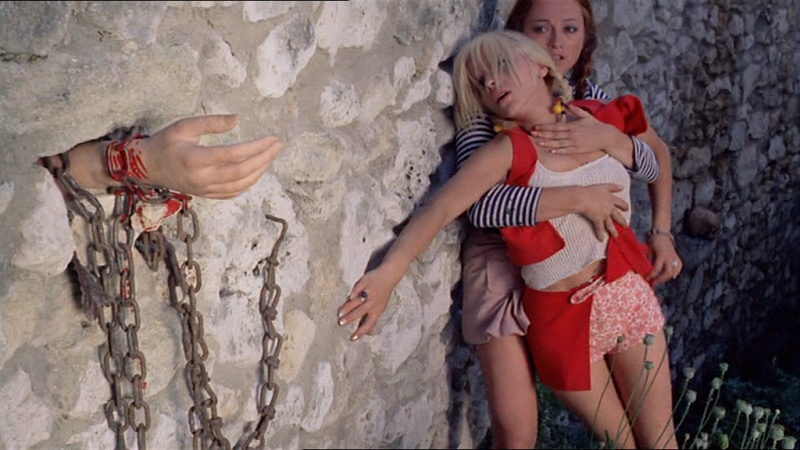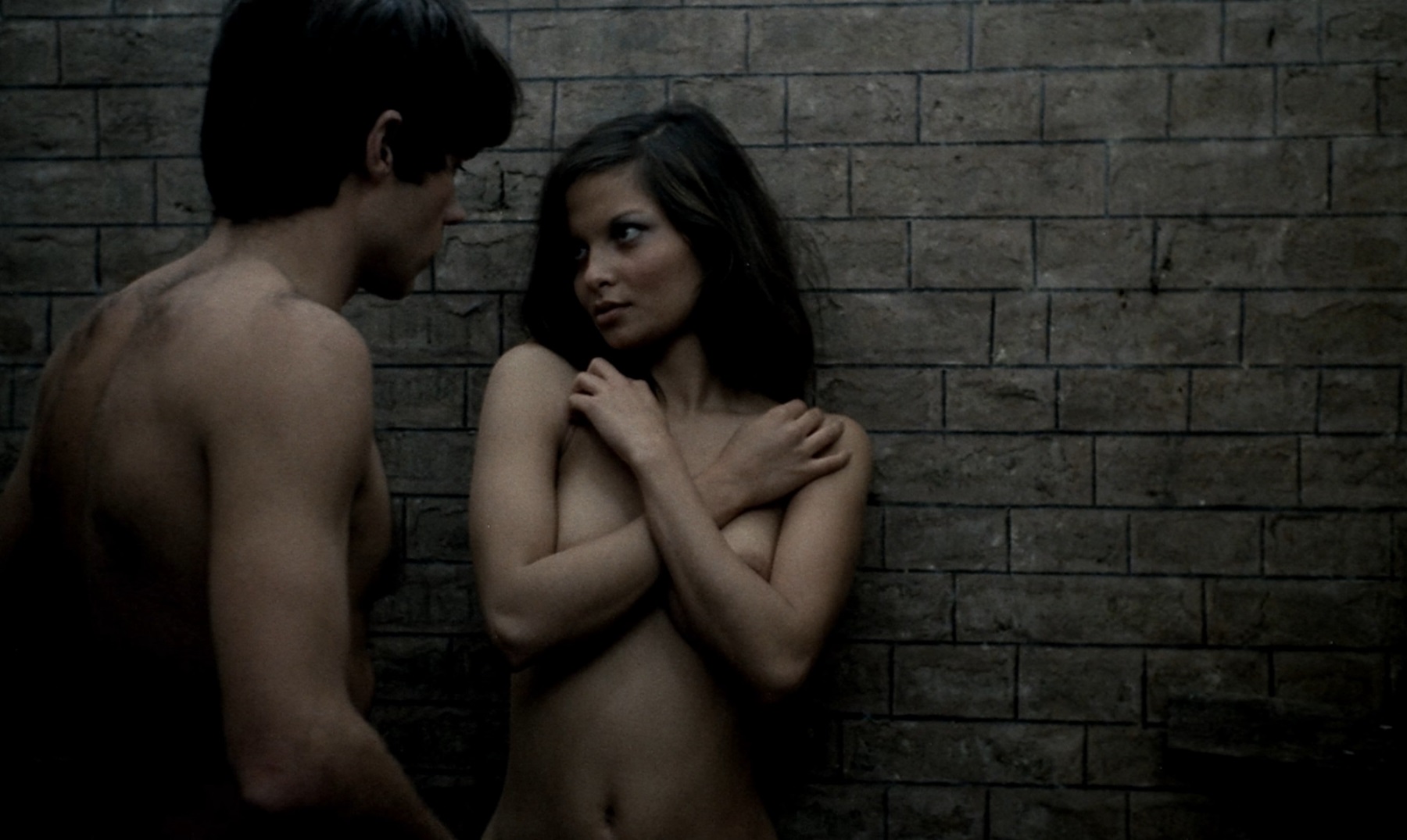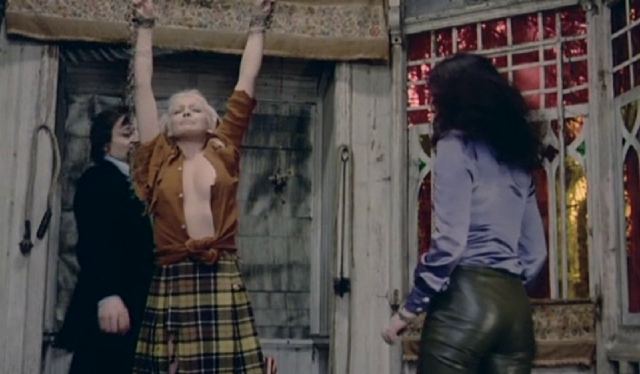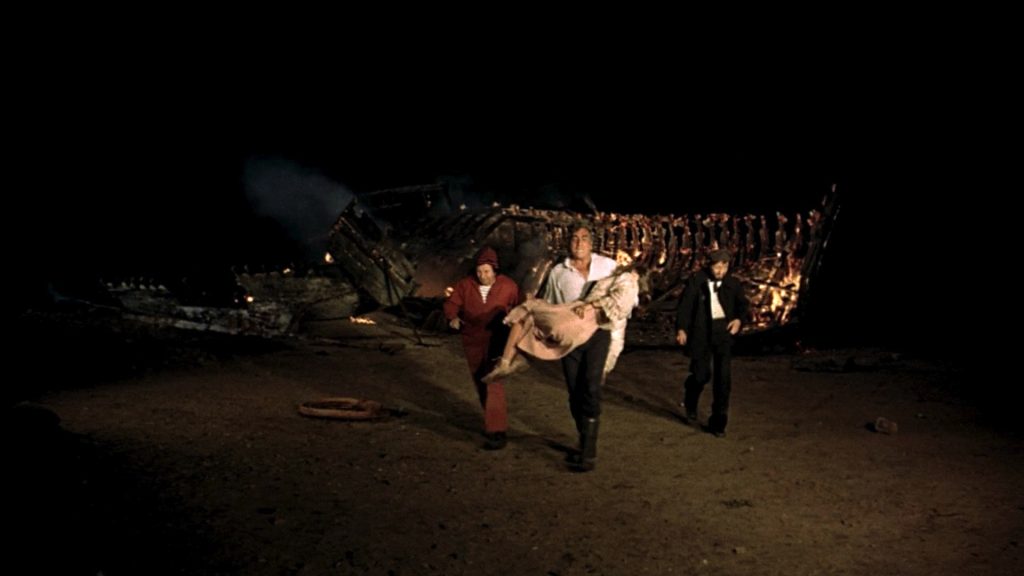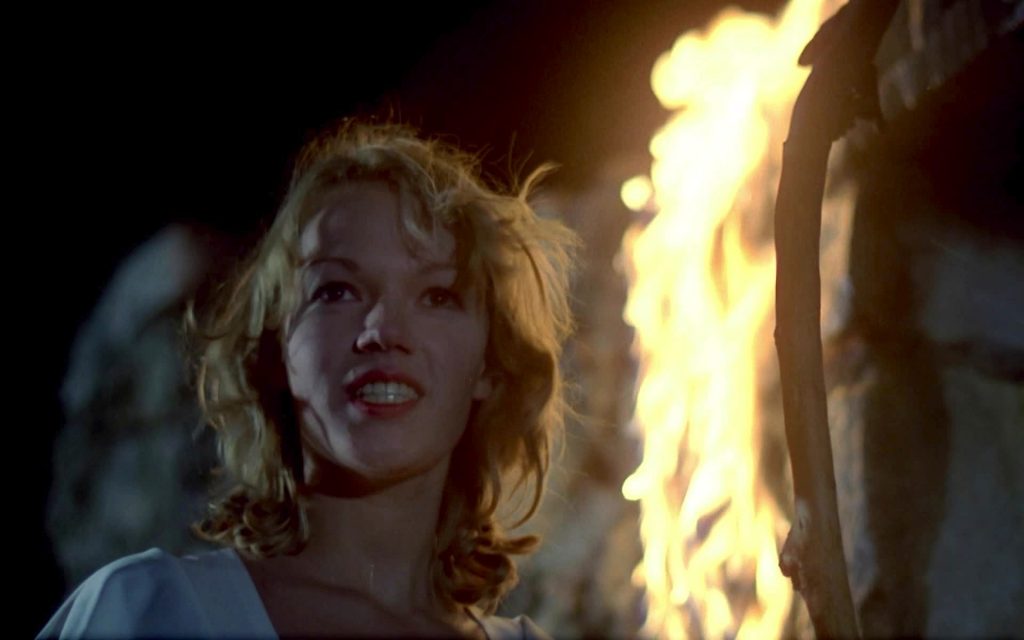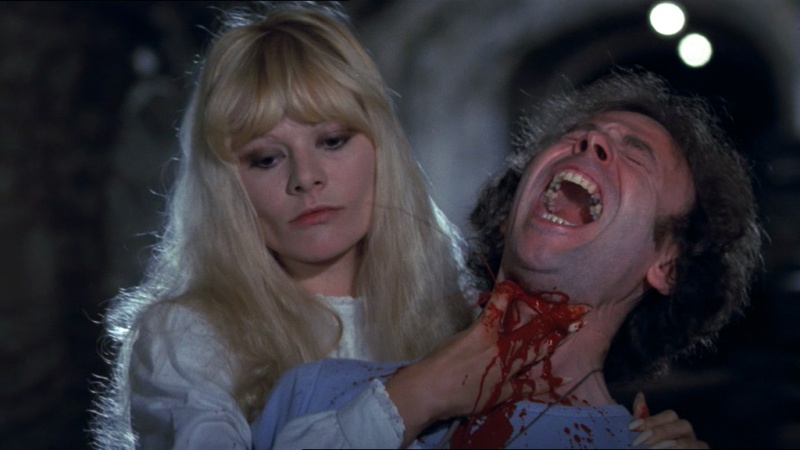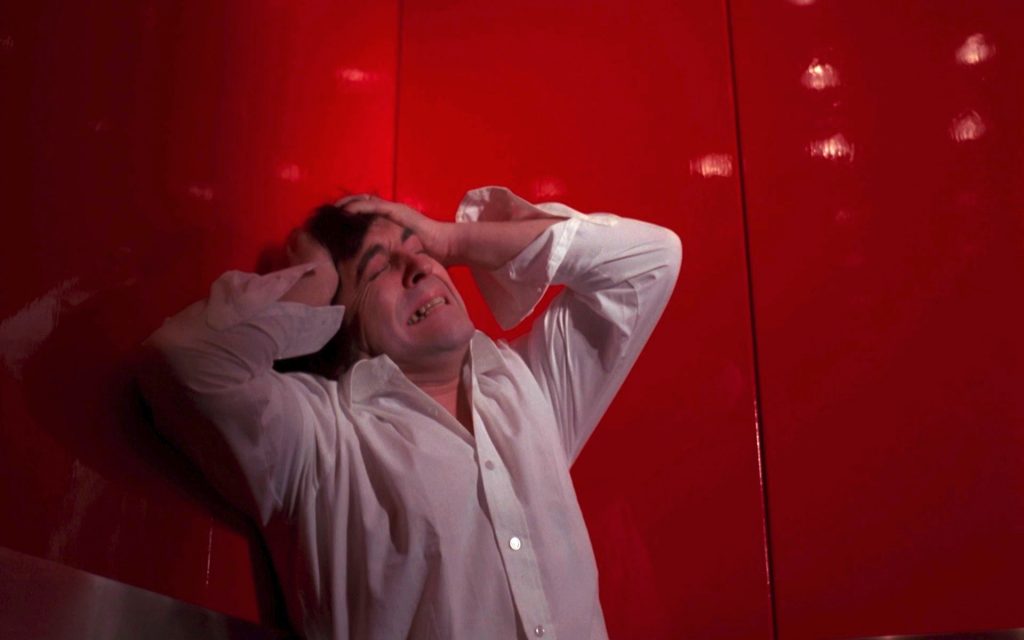The late Jean Rollin was a marginal figure in French cinema through his entire career. When he started out, no one else wanted to be the nation’s leading (even only) horror auteur, though he always considered himself more of a fantasist. Those relatively few horror fans who then existed in France (and the many who’d come along later on) found his films unsatisfying by the genre’s usual conventions of agitating suspense and graphic violence. Instead, they were exercises in dreamlike mood and surreal imagery, mixing elements erotic and macabre to ends more poetical than lurid.
Over the decades, he acquired a cult following. But still it’s fair to say people whose notion of screen horror is shaped by slasher cinema—or even classic Universal or Hammer titles—may find his work a baffling challenge. Those who succumb to its spell, however, will find films highly personal, consistent, often hypnotic, and visually inventive despite their frequently rock-bottom budgets.
Raised amongst artists—a notable family friend was the surrealist author Georges Bataille, later so beloved by post-modernists—Rollin became infatuated with movies early on. But after independently making some narrative shorts (and one political documentary covertly shot in Franco’s Spain), he found his attempts to enter the French film industry continually frustrated. He decided to set up his own production company and circumvent the establishment entirely.
A first feature (co-written by no less than famed avant-garde novelist/director Marguerite Duras) had to be abandoned when money ran out. He then had the idea to make a half-hour supernatural featurette, intending it would be shown before an imported commercial vampire flick. Once that shoestring effort was finished, his producer was so impressed that he bankrolled another hour of footage to bring it up to feature length—though all the characters had already been killed off.
Rollin gamely invented a “queen of the vampires” who restored those dead to “life,” also piling on a mad-scientist aspect, machine-gun shootout, free-jazz jam session, and other fillips. The result (complete with a second “opening credits” scroll thirty minutes in) was Le Viol du Vampire (aka The Rape of the Vampire). It was among very few movies that dared to open amidst the extreme national turmoil of May 1968, when young radicals seemed on the verge of permanently upending the established French social and political order. Perhaps as a result, it became a success de scandale—ridiculed by critics and many viewers, yet also a word-of-mouth hit for its very outlandishness. No one had ever seen anything quite like it. Perhaps its baroque B&W oddity provided a release from (or reflection of) the tense uncertainties of the day.
According to Cathal Tohill and Pete Tombs’ informative 1995 Eurotrash-cine history Immoral Tales, Rollin later called Viol a “trailer” for his future features, with nearly all recurrent signature themes and imagery already present. (Though he’d never work in B&W again—a pity, since that format really suited his aesthetic.) There were the dual protagonists (often both women), victims of violent circumstances even once their un-asked-for new bloodlust added to them; the unpredictable, sometimes irrational approach to storytelling; recurrent poetical scenes at the beach (seemingly always the same beach); hauntingly lit nighttime exterior shots; atmospheric use of ruins, abandoned buildings, forest and other presumably cheap settings.
For better or worse, this success branded Rollin as an erotic-horror maker. His next three were all further, stylish (albeit now in rich color) “sexy vampire” opuses: 1970’s The Nude Vampire, 1971’s Requiem for a Vampire and the same year’s Shiver of the Vampires. All featured plenty of variably naked, vaguely Sapphic young women wandering about castles and such, slaves to desires both mortal and undead.
Interested in sensuality rather than sex acts, Rollin was sometimes pressed by financiers into shooting more gratuitous softcore content than he liked. On some later projects, they’d insist on ramping up the gore, too. But these early vampire films remained primarily poetical reveries—more “adult,” yet also more abstract and less lurid than the Christopher Lee Dracula school of heaving-bosom, crimson-stageblood horror.
Their relative success allowed him to personally bankroll 1973’s The Iron Rose, in which young lovers find themselves trapped overnight in a seemingly inescapable cemetery that gradually wears away at their sanity. Here Rollin laid bare his indifference to genre convention, and dedication to a very personal surrealist vision. There was no nudity, no overt violence and scant “plot,” just escalating dread and striking imagery. His most purely poetical work, Rose was trashed by the few scoffing critics and disappointed horror fans who saw it.
The resulting financial fiasco sent him straight to the first of many sex films he made to get by through the rest of the decade. Directed under his preferred pseudonym Michel Gentil, Schoolgirl Hitchhikers is actually just a softcore romp, about two backpacking lassies who get into some “intimate” situations with each other and a petty crook at an uninhabited countryside chateau. But when bigger-league criminal associates show up, the scenario briefly veers into S&M territory before getting more friskily frivolous again. Given its ill-respected genre and miniscule means, Schoolgirls (in which no actual hitchhiking features) is refreshingly goofy and unpredictable.
While money for the assignments he preferred became hard to come by, Rollin made numerous hardcore films over the next few years—ones with colorful titles like Hyperpenetration, Fly Me the French Way and Discosex. Few were seen outside France. But rumor has it that they were, by porn standards, fairly plot-driven—perhaps frustrating that genre’s fans as his horror films did by being not-so-plot-driven.
Still, producers occasionally threw him a horror-themed bone. Three of them are notable titles that pushed Rollin from vampire to ghost/zombie terrain. 1974’s The Demoniacs aka Curse of the Living Dead is a mournful period saga in which two shipwreck victims are revived to avenge themselves on the louts who’d raped and murdered them after deliberately guiding their ship onto coastal rocks. As in many Rollin films, his protagonists are young women who are “undead” yet still emotionally and physically vulnerable—their revenge isn’t a cackling triumphant one but a mere temporary respite from cruel fate.
Granted a higher budget than usual, Rollin made zombie flick The Grapes of Death in 1978—the same year Night of the Living Dead maker George Romero released his Dawn of the Dead. This small-French-village equivalent has vineyard harvesters working with toxic pesticides turning into you-know-what. (Though they still speak and move normally.) It’s a relative gorefest by the director’s standards—yet also handsome, spectral, and almost meditative by the subgenre’s standards. It was one of several films he made with beautiful blonde star Brigitte Lahaie, who’d graduate from a hardcore start to more mainstream acting gigs.
Rollin also got to make a somewhat slicker film with 1979’s rather elegant period piece Fascination, in which a thieving fugitive takes refuge in the wrong chateau—becoming the latest sacrifice to a secret women’s society of blood fetishists. Even better was 1982’s The Living Dead Girl, which combined vampire and zombie tropes in the horrific yet primarily tragic saga of a deceased young woman preserved/revived by (again) toxic chemicals—then kept “alive” despite her grotesque new hungers by a sister who refuses to believe she’s ever been dead. The latter even descends to procuring victims so sis (who’s horrified by her own actions) can stay with her. It’s an unusually pathos-laden tale of bloodsucking and flesh-eating.
Breaking even farther from his usual terrain was 1980’s Night of the Hunted, atypically set almost entirely within the sterile interiors of an high-rise institution that at first appears to be a madhouse, but gradually reveals more sinister purposes. Its poignant closing shot underlines real-world cruelties well outside the supernatural realm.
Though he eventually stopped making pornos to get by—new side gigs encompassed writing pulp novels—Rollin’s cinematic output slowed in later years. He continued to make lyrical, self-referential horror films as late as 2010’s Mask of the Medusa, but they were little-seen even by his prior standards.
That same year he died of cancer, at age 72. Like fellow (if much cruder) “exploitation” cult legends such as Yanks Herschell, Gordon Lewis and Doris Wishman, he’d been duly “rediscovered,” had attracted funding for new projects and surely passed on knowing he was finally understood—at least somewhat—at last.

